Have you ever visited France, I’ve been there! Paris is magical. What about Spain, you will certainly love it.
.هل سبق لك أن زرت فرنسا، لقد كنت هناك. باريس ساحرة.ماذا عن إسبانيا، ستعشقها هذا شيء مؤكد
Hal sabqa laka an zurtta Faransa, laqad kunt hunaak. Baris saahirah. Maadha an ‘Isbanya, satu’ishquha hatha shay’ muwakad..
In today’s lesson we will discover together what are the Arabic names of European countries, we will learn the Arabic names of Belgium, Italy, and Switzerland. some of these countries are called in the same way it’s written in English, others have a totally different name.
في درسنا لهذا اليوم سنكتشف معا ماهي أسماء الدول الأوروبية باللغة العربية, سنتعلم إسم بلجيكا إيطاليا, وسويسرا بالعربية. بعض هذه الدول تدعى بنفس الطريقة التي يكتب بها الإسم في الإنجليزية لكن بعضها الآخر له إسم مغاير تماما.
fi darssina lihatha alyoum sanaktachifo ma’an ma hya asmao ad-doual alouropiya bi al-loghati al-‘arabiya, sa nata’allamo isma beljika italya wa swissra bi al-arabiya. ba’ado hathihi ad-doual tod’aa binafssi at-tariqati allati yoktabo biha al ismo fi al-injeliziya lakinna ba’adaha al-akhar laho ismon moghayeron tamaman.
Decoding the Meaning Behind Names
In Arabic, every name carries a profound meaning. When it comes to European countries, the Arabic versions often reveal historical anecdotes or geographical features. For instance, the Arabic name for France, “Faransa,” traces its roots to the ancient Frankish tribes. Exploring these etymological connections provides us with a deeper understanding of the historical context in which these names originated.
The Influence of Arabic in European Culture
Surprisingly, the influence doesn’t flow in just one direction. Arabic, with its rich vocabulary, has also left an indelible mark on European languages. Words like “alcohol” and “zero” have Arabic origins, illustrating the intellectual exchanges between these cultures. By acknowledging these linguistic intersections, we appreciate the interconnectedness of human civilization.
The complete list of European country names in Arabic
| Flag | Country’s Name | Arabic Translit. | Arabic Trans. |
|---|---|---|---|
 | Albania | ألبانيا | albania |
 | Andorra | أندورا | andora |
 | Armenia | أرمينيا | armenia |
 | Austria | النمسا | al-namsa |
 | Azerbaijan | أذربيجان | atherbaijan |
 | Belarus | روسيا البيضاء | roosia al-baida’a |
 | Belguim | بلجيكا | baljika |
 | Bosnia Herzegovina | البوسنة والهرسك | al-busna wal hersek |
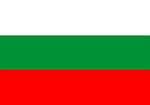 | Bulgaria | بلغاريا | belgharia |
 | Croatia | كرواتيا | kerwatya |
 | Cyprus | قبرص | kobros |
 | Czech Republic | جمهورية التشيك | Jumhooriyat at-tcheek |
 | Denmark | الدنمارك | ad-danimark |
 | England | انكلترا | engueltra |
 | Spain | إسبانيا | espania |
 | Estonia | استونيا | estonia |
 | Finland | فنلندا | finlanda |
 | France | فرنسا | faranssa |
 | Georgia | جورجيا | georgia |
 | Germany | ألمانيا | almania |
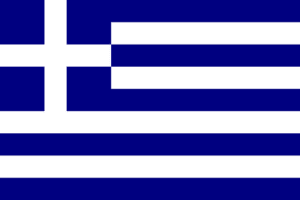 | Greece | اليونان | al-yunan |
 | Hungary | هنغاريا | hengharia |
 | Kosovo | كوسوفو | Kosovo |
 | Iceland | أيسلندا | icelanda |
 | Ireland | أيرلندا | irlanda |
 | Italy | إيطاليا | italia |
 | Kazakhstan | كازاخستان | kazakhistan |
 | Latvia | لاتفيا | latfia |
 | Liechtenstein | ليشتنشتاين | lichtenshtine |
 | Luxembourg | اللوكسمبورغ | loksambourg |
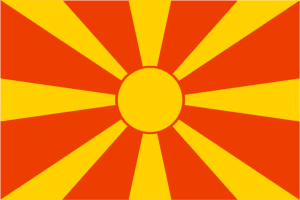 | Macedonia | مقدونيا | maqdonia |
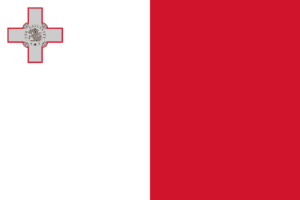 | Malta | مالطا | malta |
 | Moldova | مولدوفا | moldofa |
 | Monaco | موناكو | monaco |
 | Netherlands | هولندا | holanda |
 | Northern Ireland | ايرلندا الشمالية | irlanda al-shamaliya |
 | Norway | النرويج | al-norwij |
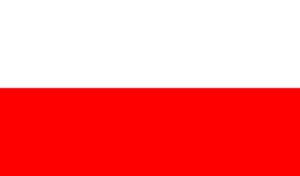 | Poland | بولندا | polanda |
 | Portugal | البرتغال | al-bortugal |
 | Romania | رومانيا | romania |
 | Russia | روسيا | roosiya |
 | San Marino | سان مارينو | san marino |
 | Scotland | أسكتلندا | oskotlanda |
 | Serbia | صربيا | serbia |
 | Slovakia | سلوفاكيا | slofakia |
 | Sweden | السويد | al-suwaid |
 | Switzerland | سويسرا | sweesra |
 | Turkey | تركيا | turkiya |
 | Ukrain | أوكرانيا | okrania |
 | Vatican | الفاتيكان | al-fatikan |
 | Wales | الويلز | al-wales |
Frequently Asked Questions
Q: Are all European country names in Arabic drastically different from their English counterparts?
A: Not necessarily. While some names have distinct Arabic forms, others retain phonetic similarities to their English versions. It varies based on historical interactions.
Q: How do Arabic-speaking people pronounce the names of European countries?
A: Arabic pronunciation adds melodic nuances, often altering the sounds slightly. For instance, “Germany” becomes “Almania” in Arabic, pronounced with a soft “a.”
Q: Is there a specific reason behind the translation of European country names into Arabic?
A: Yes, these translations reflect the cultural exchanges and historical interactions between Arab and European civilizations. They showcase the adaptability of languages.
Q: Can you provide examples of Arabic words borrowed by European languages?
A: Certainly! Words like “coffee” (qahwa) and “sugar” (sukkar) have Arabic origins, demonstrating the culinary impact of Arabic culture on Europe.
Q: How has the Arabic representation of European countries evolved over centuries?
A: The evolution is fascinating, reflecting conquests, trade routes, and scholarly exchanges. Some names have remained consistent, while others adapted to linguistic shifts.
Q: What role did medieval scholars play in translating European texts to Arabic?
A: Medieval Arab scholars were instrumental in translating European works, preserving knowledge, and facilitating cultural exchanges during the Islamic Golden Age.
Q: Are there similarities between Arabic and European languages that facilitate translation?
A: Yes, both language families share common linguistic roots, enabling certain words to have similar or easily adaptable forms in Arabic and European languages.
Q: How can understanding these linguistic connections enhance cultural appreciation?
A: Recognizing these connections fosters cultural empathy, encouraging mutual respect and understanding between Arab and European communities.
In Conclusion: Bridging Cultures Through Language
As we conclude this linguistic odyssey, we are left with a profound appreciation for the intricate threads that bind European countries and the Arabic language. This exploration not only deepens our knowledge but also serves as a testament to the beauty of linguistic diversity. By understanding the Arabic names of European countries, we bridge gaps, celebrate shared histories, and promote a world where cultural understanding knows no borders.
